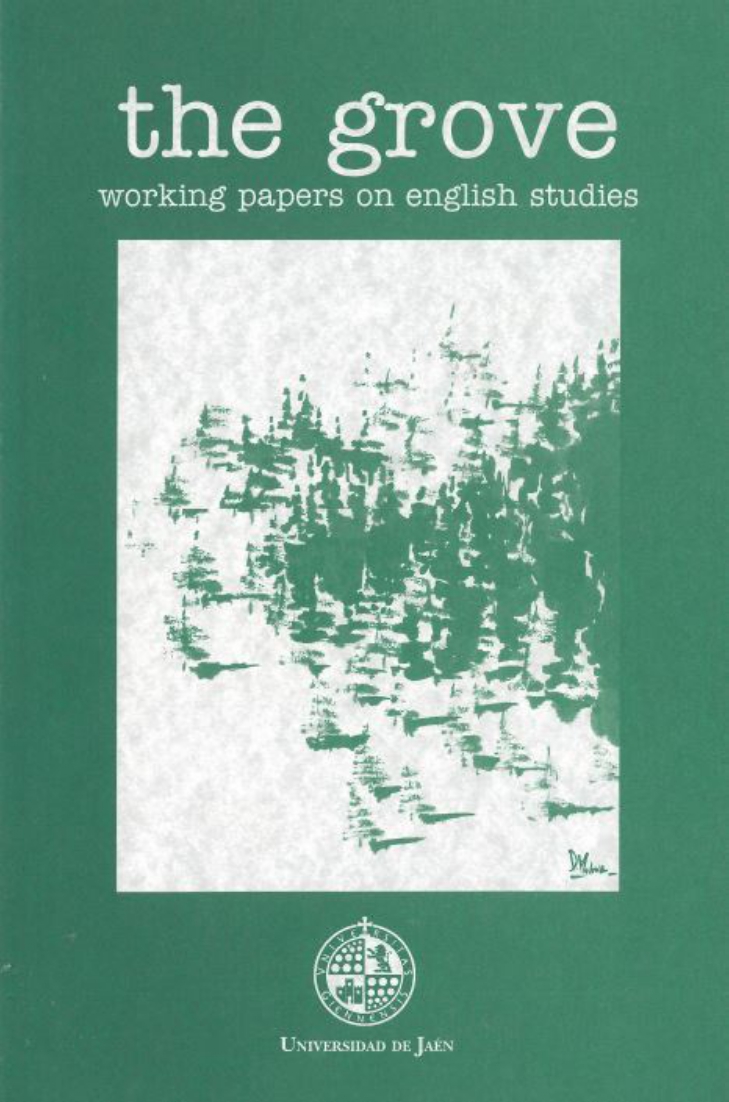Language of Persuasion: Analysis of Conceptual Metaphors in Political Discourse
Keywords:
conceptual metaphor, political discourse, persuasion, United States, United KingdomAbstract
The aim of this article is to study the scope of conceptual metaphors as a persuasive tool inherent to political discourse in English. In particular, it dwells upon the use of four conceptual metaphors such as NATION IS A FAMILY, STATE IS A BODY, POLITICS IS A WAR, and POLITICS IS A GAME. For this purpose, the transcripts of twenty-eight public speeches delivered by David Cameron, Hillary Clinton, Theresa May, and Donald Trump were analysed. The results revealed numerous functions of these metaphors in the process of persuasion. Apart from that, the analysis showed that the majority of the analysed politicians resort to the source domain of WAR to conceptualise their political activities, while the source domain of GAME is the least frequently used.
Downloads
References
Angouri, Jo. “Quantitative, Qualitative or Both? Combining Methods in Linguistic Research.” Research Methods in Linguistics. Ed. Lia Litosseliti. Continuum International Publishing Group, 2010, pp. 29-45. Baxter, Judith. “Discourse-Analytic Approaches to Text and Talk.” Research Methods in Linguistics. Ed. Lia Litosseliti. Continuum International Publishing Group, 2010, pp. 117-37.
Carver, Terrell., and Jernej Pikalo. “Editors’ introduction.” Political Language and Metaphor: Interpreting and Changing the World. Eds. Carver, Tarrell and Jernej Pikalo. Routledge, 2008, pp. 1-11. DOI: https://doi.org/10.4324/9780203931233
Charteris-Black, Jonathan. Politicians and Rhetoric: The Persuasive Power of Metaphor. Palgrave Macmillan, 2011. DOI: https://doi.org/10.1057/9780230319899
Chilton, Paul., and Christina Schäffner. “Introduction: Themes and Principles in the Analysis of Political Discourse.” Politics as Text and Talk: Analytic Approaches to Political Discourse. Eds. Chilton, Paul and Christina Schäffner. John Benjamins, 2002, pp. 3-41. DOI: https://doi.org/10.1075/dapsac.4
Collins English Dictionary, https://www.collinsdictionary.com/dictionary/english Accessed 11 Mar. 2020.
Croft, William., and D. Alan Cruse. Cognitive Linguistics. Cambridge University Press, 2004. DOI: https://doi.org/10.1017/CBO9780511803864
Drulák, Petr. “Identifying and Assessing Metaphors: Discourse on EU Reform.” Political Language and Metaphor: Interpreting and Changing the World. Eds. Carver, Tarrell and Jernej Pikalo. Routledge, 2008, pp. 105-18.
Fairclough, Norman. Language and Power. Routledge, 2001.
Fairclough, Norman., and Ruth Wodak. “Critical Discourse Analysis.” Discourse as Social Interaction, vol. 2. Ed. Teun A. van Dijk. Sage, 1997, pp. 258–84.
Goatly, Andrew. Washing the Brain: Metaphor and Hidden Ideology. John Benjamins, 2007. DOI: https://doi.org/10.1075/dapsac.23
Harris, Peter. B. Foundation of Political Science. London: Hutchinson, 1976.
Jones, Jason., and Jean S. Peccei. “Language and Politics.” Language Society and Power: An Introduction. Eds. Singh Ishtla and Jean S. Peccei. Routledge, 2004, pp. 35–54. DOI: https://doi.org/10.4324/9780203426968_chapter_3 Jowett, Garth. S., and Victoria O’Donnell. Propaganda and Persuasion. London: SAGE, 2012.
Lakoff, George. “The Contemporary Theory of Metaphor.” Metaphor and Thought. Ed. Andrew Ortony. Cambridge University Press, 1993 pp. 202-51. DOI: https://doi.org/10.1017/CBO9781139173865.013
---. Moral Politics: How Liberals and Conservatives Think. University of Chicago Press, 1996.
Lakoff, George, and Mark Johnson. Metaphors We Live By. Chicago University Press, 1980. Lakoff, Robin. T. The Language War. Berkeley: University of California Press, 2001. DOI: https://doi.org/10.1525/9780520928077
Levon, Erez. “Organizing and Processing Your Data: The Nuts and Bolts of Quantitative Analyses.” Research Methods in Linguistics. Ed. Lia Litosseliti. Continuum International Publishing Group, 2010, pp. 68-92.
Mihas, Elena. “Non-literal Language in Political Discourse.” LSO Working Papers in Linguistics, vol. 5, 2005, pp. 124-39.
Miller, Gerald R. “On Being Persuaded: Some Basic Distinctions.” Persuasion: New Directions in Theory and Research. Eds. Roloff, Michael E., and Gerald. R. Miller. Beverly Hills: SAGE, 1980, pp. 11-28.
Musolff, Andreas. Metaphor and Political Discourse: Analogical Reasoning in Debates about Europe. London: Palgrave Macmillan, 2004. DOI: https://doi.org/10.1057/9780230504516
---. Political Metaphor Analysis: Discourse and Scenarios. London: Bloomsbury, 2016. Newmark, Peter. About Translation. Clevedon: Multilingual Matters Ltd., 1991.
Partington, Alan. The Linguistics of Political Argument: The Spin-doctor and the Wolf-pack at the White House. Routledge, 2003.
Perrez, Julien., and Min Reuchamps. “Deliberate Metaphors in Political Discourse: The Case of Citizen Discourse.” Metaphorik, vol. 25, 2014, pp. 7–41, https://www.metaphorik.de/en/book/export/html/421 Accessed 18 Mar. 2020.
Pragglejaz Group. “MIP: A method for identifying metaphorically used words in discourse.” Metaphor and Symbol, vol. 22, no. 1, 2007, pp. 1-39. DOI: https://doi.org/10.1080/10926480709336752
Ringmar, Erik. “Metaphors of Social Order.” Political Language and Metaphor: Interpreting and Changing the World. Eds. Carver, Tarrell and Jernej Pikalo. Routledge, pp. 57-68.
Salmi-Tolonen, Tarja. “Persuasion in judicial argumentation: the opinions of the advocates general at the European Court of Justice.” Persuasion Across Genres. Eds. Halmari, Helena and Tuija Virtanen. John Benjamins, 2005, pp. 59-101. DOI: https://doi.org/10.1075/pbns.130.06sal
Schapiro, Tamar. “What Is a Child?” Ethics, vol. 109, 1999, pp. 715–38. DOI: https://doi.org/10.1086/233943
Semino, Elena. Metaphor in Discourse. Cambridge University Press, 2008. Silverman, David. Interpreting Qualitative Data: Methods for Analysing Talk, Text and Interaction. London: SAGE, 2006.
Steen, Gerard J., et al. Method for Linguistic Metaphor Identification: From mip to mipvu. John Benjamins, 2010. DOI: https://doi.org/10.1075/celcr.14
Steen, Gerard J. Finding Metaphor in Grammar and Usage. John Benjamins, 2007. DOI: https://doi.org/10.1075/celcr.10
Trosborg, Anna. Text Typology and Translation. John Benjamins, 1997. DOI: https://doi.org/10.1075/btl.26
Van Dijk, Teun A. Racism and the Press. Routledge, 1991.
---. “Multi-disciplinary CDA: A Plea for Diversity”. Methods of Critical Discourse Analysis. Eds. Wodak Ruth and Michael Meyer. Sage, 2001, pp. 95-119. DOI: http://dx.doi.org/10.4135/9780857028020.n5
---. “Political Discourse and Ideology.” Jornadas del Discurso Politico de UPF, http://www.discourses.org/dis-pol-ideo.htm Accessed 19 Oct. 2019.
---. “Political Discourse and Political Cognition.” Politics as Text and Talk: Analytic Approaches to Political Discourse. Eds. Chilton, Paul and Christina Schäffner. John Benjamins, 2002, pp. 203-37. DOI: https://doi.org/10.1075/dapsac.4.11dij
Virtanen, Tuija., and Helena Halmari. “Persuasion Across Genres: Emerging Perspectives.” Persuasion Across Genres. Eds. Halmari, Helena and Tuija Virtanen. John Benjamins, 2005, pp. 3-27. DOI: https://doi.org/10.1075/pbns.130.03vir
Downloads
Published
Issue
Section
License
Copyright (c) 2021 Olha Lapka

This work is licensed under a Creative Commons Attribution 4.0 International License.
Authors who publish with this journal agree to retain copyright and grant the journal right of first publication with the work simultaneously licensed under a Creative Commons Attribution License that allows others to share the work with an acknowledgement of the work's authorship and initial publication in this journal. Also, authors will retain the rights on their work, even if they will be granting The Grove. Working Papers on English Studies a non-exclusive right of use to reproduce, edit, distribute, publicly communicate and show their work. Therefore, authors are free to engage in additional, independent contracts for non-exclusive distribution of the works published in this journal (such as uploading them to an institutional repository or publishing them in a book), as long as the fact that the manuscripts were first published in this journal is acknowledged.
















